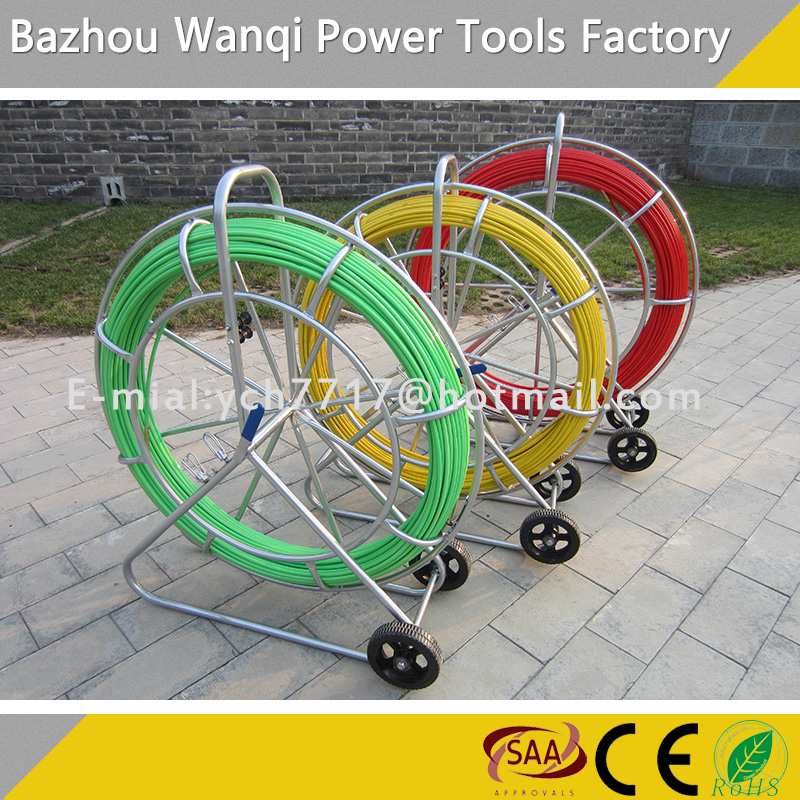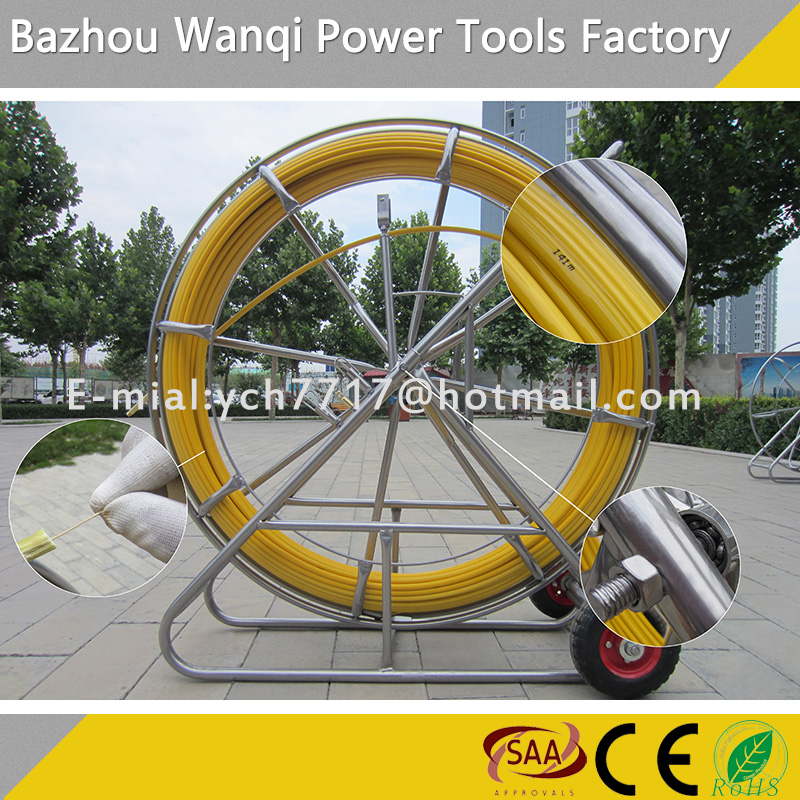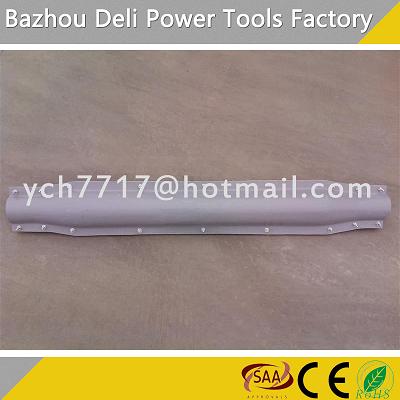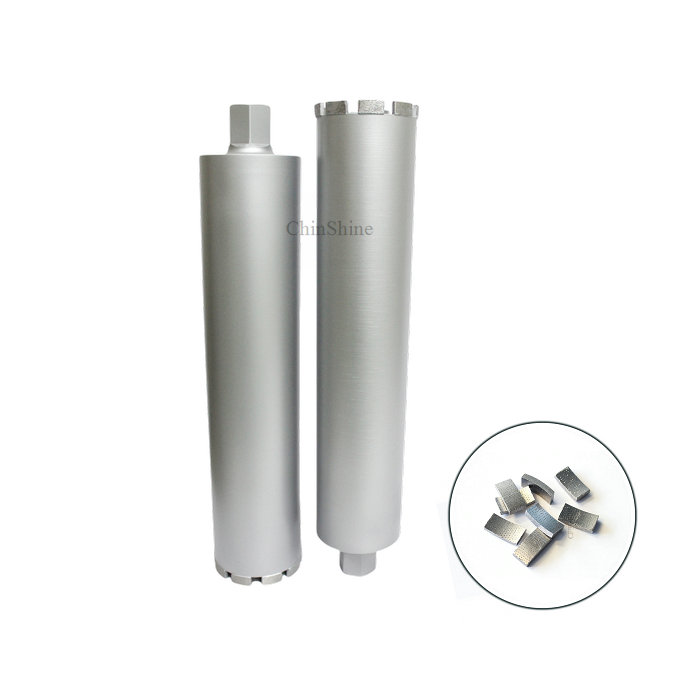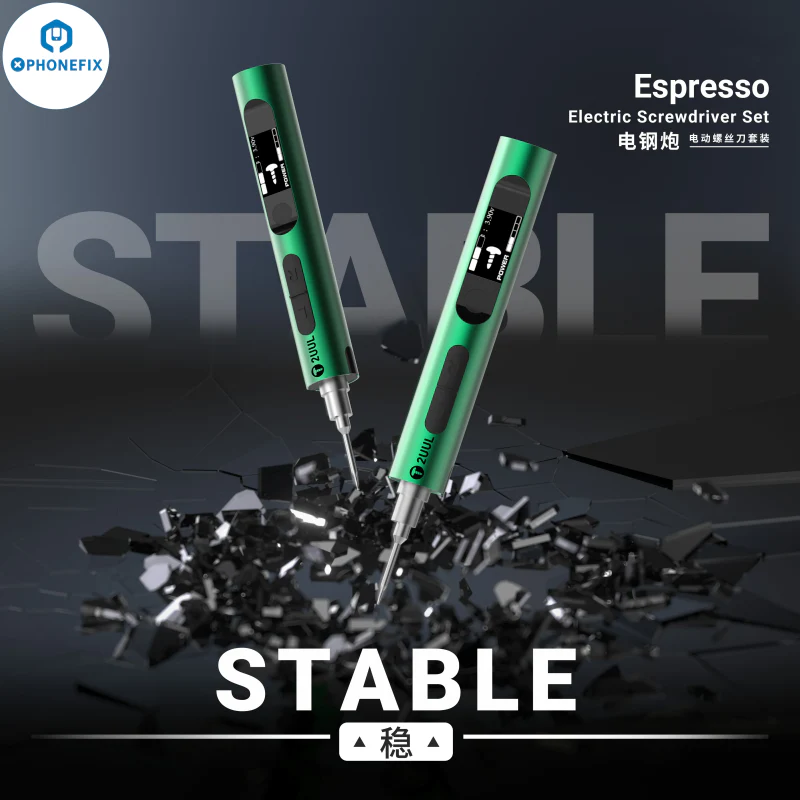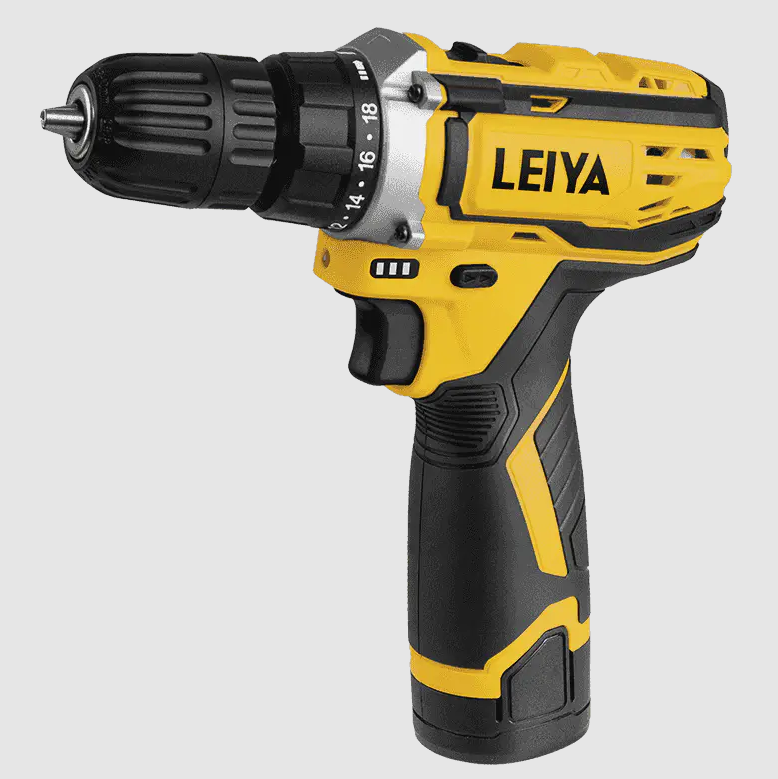FRP Ruf Rod/Fiberglass Ruf Rod
Introduction
Our company produces Duct Rodders has 12 years of history, we generate different diameter of Duct Rodders, diameter range from 3mm to 15mm length of 15mm.Duct Rodders, 60m, 100m, 150m, 180m and a variety of specifications, of course also can according to the customer need to customize the length. The color of the rod is divided into white, yellow, orange, blue, black, green, red, we on the rod make m the number of markers, and can be used for the customers in the rod marker customers trademarks.
We can provide a variety of Duct Rodders cage style, in order to meet the needs of customers in different countries.
Product introduction
The rod
Deli rods are manufactured from state-of-the-art materials formulated to offer the high performance & durability demanded by our customers.The core of the rod is manufactured by the pultrusion process. This involves impregnating high strength continuous glass fiber filaments with a liquefied resin. The fibers are drawn in to a heated die where the resin matrix is cured, bonding the fibers together and allowing mechanical loads to be transmitted through the matrix and distributed amongst the fibers.The resulting pultruded rod combines both the high stiffness required to push the rod through long distances of ducting, with the flexibility to handle tight bends without damage. This inner core is then coated with a highly durable, scratch resistant polypropylene sheath which protects the core from mechanical damage.
The frames
Frames are also a feature of the Hunter systems. a larger footprint for stability; steel brake handles that will last forever; dual rod out-feeding positions and wheels inside the frame width. The two smallest sizes feature frames with the feedout built into the handle. All frames can be laid down on either side. These are just some of the design features that will make every unit more usable and friendly for the end user.
Rod selectIon
Which is the right rod diameter for any given application? The rod selection is usually governed by several factors including:
The size of ducting it is to be pushed through
The distance the rod is to be pushed
The number and tightness of bends in the ducting
If the ducting is already occupied by cable
When being pushed through the duct, any rod will tend to form “sine waves”, hitting the wall of the duct at certain intervals.
Each time the rod comes in contact with the wall of the duct, it causes friction. The friction will build and eventually prevent the rod from being pushed any further. Small rod in large duct will make more frequent contact with the ducting; the same rod in smaller duct will make less frequent contact and therefore less friction so it can be pushed further. Large rod in small ducting is a good situation, but reduced flexibility of the rod may cause increased friction in the tighter bends.
Contactus
Person in charge:Caeser
Tel:
Fax:
Phone:+86









